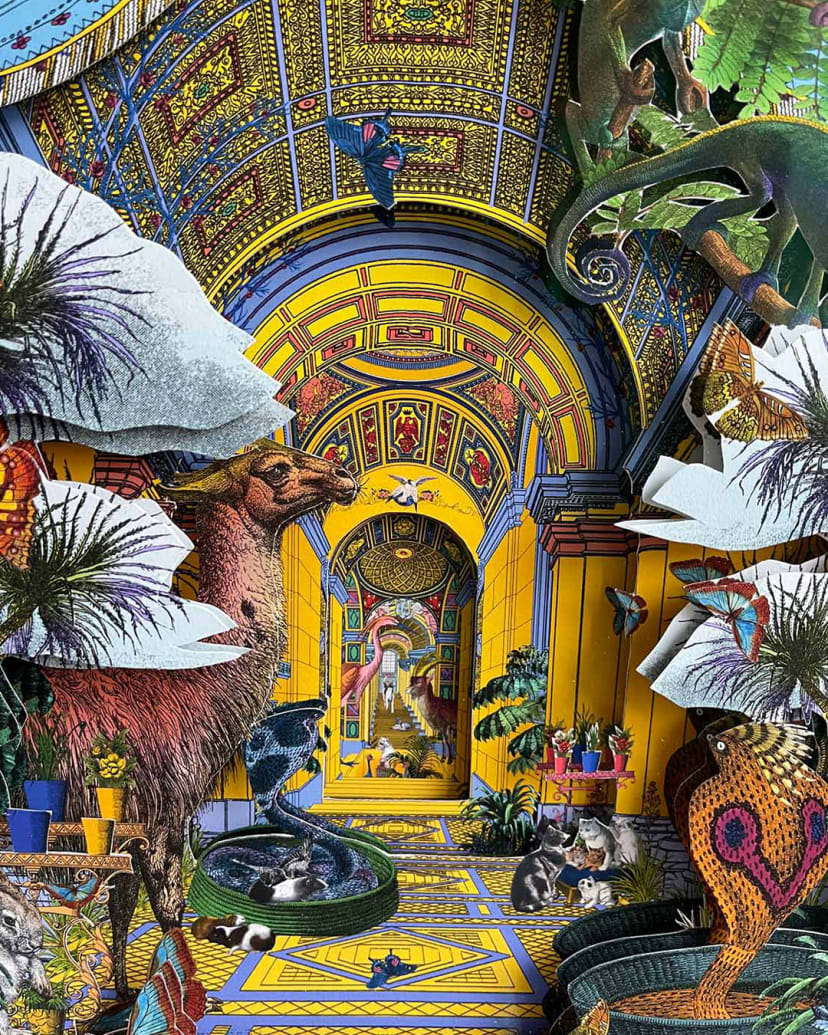Don’t let the simplicity of Elisabeth Scheder-Bieschin’s work fool you. Granted, the artist works in what could be considered one of the most rudimentary mediums: the cyanotype – a striking form of photographic documentation invented in 1842. Her subjects, too, are usually single objects: a feather or flower, perhaps. But each is loaded with hidden meaning and personal significance.

Why did you become an artist?
My mother was very supportive, she loved to paint and draw. She later worked with stained glass and made several commissions for churches. Also, my school art teacher gave me the confidence to believe that this could be a career path for me.
Why do you work primarily in photography?
I set up a darkroom in my parents’ basement when I was about fifteen. Photography was much more technical then and you had to master the craft elements before you could produce a good print. I loved the technical aspects of photography first – the cameras and how precise you had to be. I’m still fascinated by the magic that happens in the darkroom.
Where do you find inspiration?
I am interested in the history of photography, and I find inspiration in the work and techniques used by the pioneers of photography like William Henry Fox Talbot. I often combine early photographic techniques with modern ones.

How do you feel while you’re working? What’s going through your mind?
My photographic practice is dominated by process so requires a lot of concentration and precision.
Do you have a particular routine or any “rituals” when you’re working?
When working in the darkroom I like listening to music. I choose my children’s playlists; they have great taste in music!
What does your typical working day look like?
A good day starts with a cup of coffee and a chat with my husband. Apart from that I don’t really like routines. Every day is different.
If you weren’t an artist, what would you do and why?
When I started studying and working, I wanted to be an investigative journalist and thought of combining writing with photography. I realised that I’d be better at focussing on one of those and became a photographer.
Elisabeth Scheder-Bieschin is open at Paul Smith Westbourne House now.
You can take a virtual tour of the exhibition here.
Discover More

EVENTS & EXHIBITIONS
Portrait Of The Artist: Nicola Wiltshire
As ‘Midnight Oil’, a new exhibition of her work specially commissioned by us, opens at Paul Smith Borough Yards, we spoke to artist Nicola Wiltshire about her colourful, bold and vivid work.
11.22

EVENTS & EXHIBITIONS
Portrait Of The Artist: Kristjana S Williams
On the eve of her twin London exhibitions – ‘Landscapes Reimagined’ – opening at Paul Smith Westbourne House in Notting Hill and Albemarle Street in Mayfair, the collage artist speaks to us about her working rituals, the beauty in nature and her endless stream of ideas.
11.22
Sign Up For Updates
Published: 06.02.2022
Words: Molly Isabella Smith & Elisabeth Scheder-Bieschin
